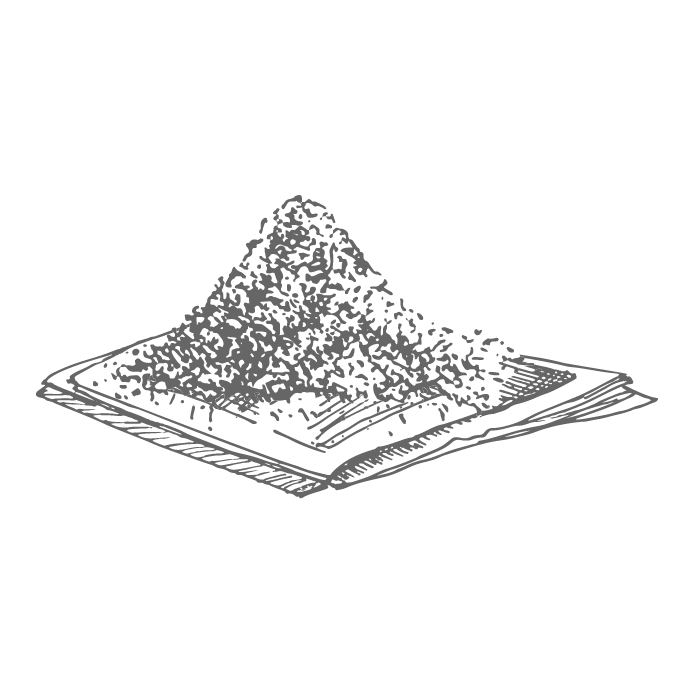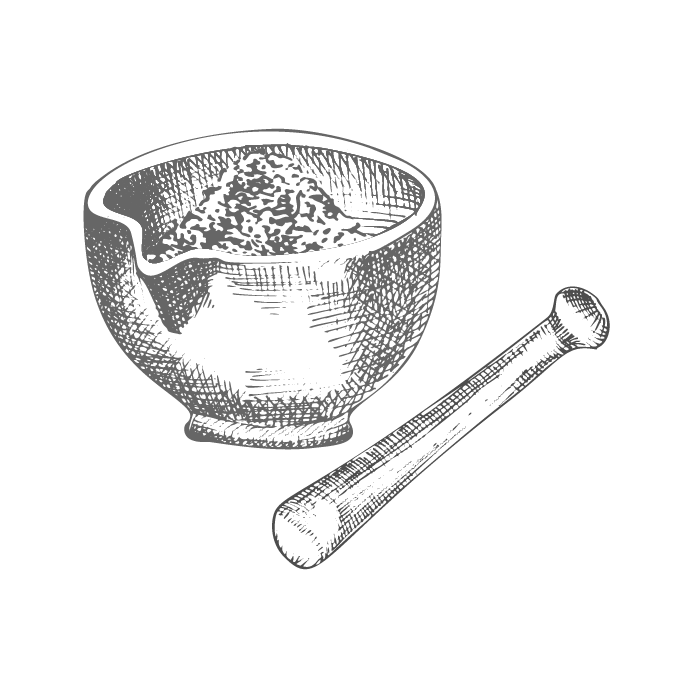In Chinese Medicine we use lots of different plants as part of our herbal formulas. Each herb has its own purpose within a formula. They have certain properties such as taste (the five flavours) and energy type (the four energies) which can help us determine its functions. Every herb has a particular body system or channel that it focuses on to assist us with our various symptoms.
The five flavours help give us a clue to what the herb can do. They are: Pungent (the herb disperses and moves qi and blood), Bitter (the herb can descend, drain, purge, dry dampness and tonify the yin), Sour (the herb astringes something or holds it into the body), Sweet (the herb repairs and tonifies things in the body) and Salty (the herb softens hardness and flushes the body).
The four energies describe the nature of the herb, an example it is easy for most people to understand is that cold is associated with mint while heat is associated with ginger. The four energies and what they can tell us about a herb are: Cool and Cold (the herb can clear heat, drain fire, cool the blood and tonify yin) and Warm and Hot (the herb can warm the yang, repair fire, clear cold, remove cold obstruction in the channels and tonify yang).
Now that spring is here, let’s take a closer look at some of the beautiful flowers – ‘Hua’ in Mandarin – around us and how they are used in TCM!
(Please note that Rebalance Chinese Medicine only recommends taking these herbs as prescribed by an accredited practitioner and in the recommended forms (usually dried) – do not pick them yourselves to make your own tea without further knowledge)
Hong Hua
More commonly known as safflower, this herb is used in Chinese Medicine to increase blood circulation, assist with circulation related pain and sometimes to relieve rashes. It is pungent and warm in nature, and it focuses in particular on the heart and liver, two organs vital for healthy menstruation. Common symptoms Hong Hua is prescribed for include dysmenorrhoea (period pain), amenorrhea (absence of periods) and abdominal pain (especially after pregnancy).
This herb is considered contraindicated for pregnancy so please consult your prescribing practitioner if you are or think you may be pregnant before consumption.
Ju Hua
In English, this flower is known as chrysanthemum. In Chinese Medicine, it is known to have both a sweet and bitter taste as well as cool energy. It targets the lungs and liver and is thought to calm the liver to remove wind, brighten the eyes and clear the body of wind-heat. It is commonly prescribed for headaches, dizziness, eye problems such as dry eyes, excessive tears, blurry vision or floaters and deafness or tinnitus. It is also worth noting that the white version of the flower is particularly used for calming the liver while the yellow one is more often used in cases of wind-heat.
Jin Yin Hua
Also known as Honeysuckle, this herb is cold in nature and tastes sweet. It targets the lungs, stomach, and large intestine. In Chinese Medicine it is used to cool blood, clear heat, remove toxins and expel wind-heat. The conditions we usually see Jin Yin Hua being prescribed for are dysentery, appendicitis, carbuncles, boils, some lung abscesses and pain/swelling in the eyes, breast and/or throat.
Due to this herb’s cold nature and tendency to target the stomach it is important that patients with any stomach cold conditions avoid taking Jin Yin Hua until this cold is first cleared. Symptoms associated with stomach cold to look out for include feelings of coldness (chills) – especially in the abdomen, sudden and severe epigastric pain, strong preference for warm food and drinks, and/or vomiting clear fluids.
Xin Yi Hua
While spring and its blooming flowers are often associated with aggravating hay fever, this flower – biond’s magnolia – is used by Chinese Medicine Practitioners to help with sinusitis. It is pungent and warm and targets the lung and stomach. It expels wind-cold and opens up the nasal passages meaning it is often prescribed for sinus headaches, sinus congestion, excessive nasal mucus, toothache and/or a loss of the sense of smell.
Mei Gui Hua
Rose buds are sweet and slightly bitter in taste, warming in nature and targets both the liver and spleen. It is said to regulate liver qi and harmonise the stomach and to improve blood circulation/remove blood stasis. It is often prescribed for stomach or hypochondriac pain, trauma or irregular menstruation.
Mei Gui Hua is also sometimes prescribed as a soak meaning it can be added to a bath or foot bath as absorbing it through the skin may help reduce muscle tension.
Huai Hua
This herb comes from the pagoda tree. It is bitter and cool and targets the large intestine and liver. In Chinese Medicine it is used to clear heat, stop bleeding (this doesn’t mean you should rub it on a cut!), clear liver wind/wind-heat and cool the blood. It is commonly prescribed for haemorrhages which have been caused by what we call ‘heat in the blood’, especially when they occur in the lower part of the body. It also might be prescribed for dizziness and red eyes which have resulted from liver wind/wind-heat.
Yuan Hua
A bitter and warm herb, the flower of daphne genkwa can be poisonous when not taken properly. It targets the kidneys, large intestine, and lungs. It us used for eliminating phlegm and expelling parasites. When prescribed, it is given to patients with such symptoms as oedema, wheezing cough or it can be used externally in cases of tinea.
This herb can be toxic in higher doses and so must not be taken during pregnancy.
Please reach out to us on 0412 789 772 to see how we can assist you with your health journey.
You can also reach me via email – eve@rebalancetcm.com


